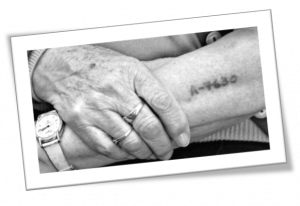Hidden children refers to children, mainly Jewish, who were “hidden” in some way to prevent them from being caught and most likely murdered by the Nazis. Many such children survived by being placed within another, usually Catholic, family, and then raised as a member of that family. To explain the sudden “arrival” of this “new” child into the family, he might for instance be described as a cousin who had come to join this family, perhaps from the countryside. Since he was now a new member of this Catholic family, he too would have to be able to behave as other Catholic children. Once again, the lives of the true family-members were in extreme danger if the Nazis were to find out this deception.
When a child who was hidden with at least one of his parents, in some physical location, such as a secret attic, the family would need at least one outside non-Jewish “helper”. This person brought daily food and other supplies. The lives of the helpers were in extreme danger if the Nazis were to find out this deception, since then they themselves would all be murdered.
Some children were “hidden” in a convent, as if one of the other regular Catholic children. The child would have to be able to behave as all the other Catholic convent children behaved – know his prayers, how to handle a rosary, how to behave during mass etc. All these skills the child would have to learn very fast. In this case, at least one of the nuns would have to know that the child was actually Jewish and “hiding.” Once again, the lives of the nuns were in extreme danger if the Nazis were to find out this deception.

